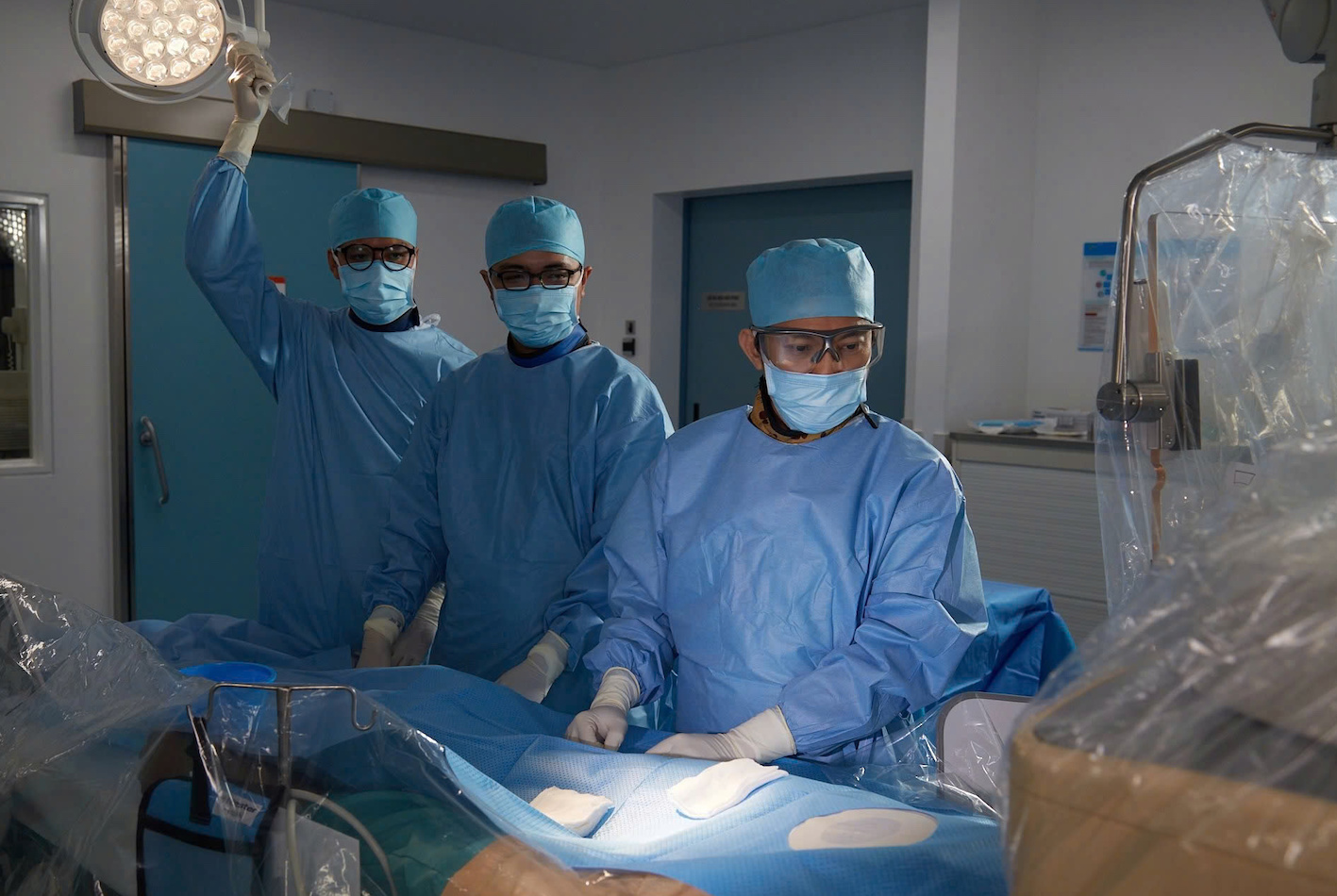The man suddenly experienced shortness of breath and collapsed. Onboard, medical personnel performed CPR, administered multiple electric shocks, and intubated him before transferring him to a local hospital. He was diagnosed with a critical heart attack and urgently transferred to FV Hospital, receiving continuous resuscitation during the three-hour journey.
On 25/9, Doctor Ho Minh Tuan, head of the Cardiology & Interventional Cardiology Department, reported that a bedside ultrasound revealed the patient had suffered a heart attack accompanied by cardiogenic shock and cardiac arrest. Cardiogenic shock, a condition where the heart loses its ability to pump effectively, causing blood to pool in the lungs, necessitated intubation and high-dose oxygen.
Doctors immediately performed a stent placement procedure to reopen the coronary artery. Within 20 minutes, blood flow to the heart was restored, and the patient's electrocardiogram and blood pressure stabilized. He recovered quickly and was discharged 10 days later, returning home on a commercial flight without medical assistance. His heart function had returned to near normal.
 |
Medical staff perform the heart procedure on the patient. Photo: Hospital provided |
Acute myocardial infarction (heart attack) is a leading cause of hospitalization and death globally and in Vietnam. According to the World Health Organization (WHO), nearly 20 million people died from cardiovascular diseases in 2022, accounting for approximately 32% of global deaths. Most of these were related to heart attacks and strokes, with many deaths occurring within the first few hours due to arrhythmia complications.
The most common warning sign is chest pain lasting over 30 minutes, accompanied by shortness of breath and sweating. Some individuals may not experience chest pain but exhibit non-specific symptoms such as fatigue, palpitations, shortness of breath, epigastric pain, nausea, vomiting, or altered consciousness.
Anyone experiencing these symptoms should immediately seek medical attention at a facility equipped for cardiac intervention. In cardiac emergencies, time is crucial for survival, recovery, and minimizing complications. The American and European Heart Associations recommend a "golden hour" of 90 minutes from arrival at the emergency room to the restoration of blood flow to the blocked artery.
Individuals at high risk of heart attack include those diagnosed with coronary artery disease or with risk factors such as older age (men over 45, women over 55), being overweight or obese, lack of physical activity, smoking, high blood pressure, diabetes, high cholesterol, and physical or emotional stress. Managing these risk factors is key to preventing heart attacks.
Le Phuong












